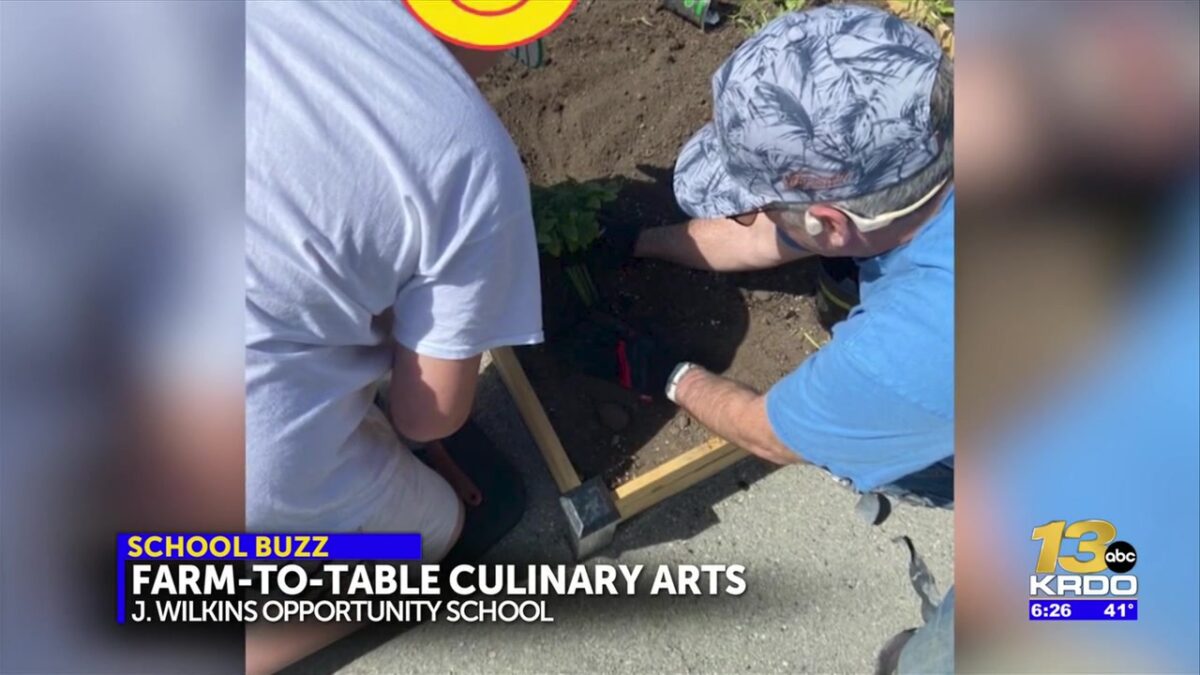Mackenzie Stafford
PEYTON, Colo. (KRDO) — A Peyton man is aspiring to be the best car builder in the world, creating a first-of-its-kind hydrogen-powered car.
The new build was recently showcased in one of the biggest national car shows in Las Vegas, Nevada.
“So SEMA is the world’s largest automotive trade show. So, anybody that’s anybody is in the show, and you have to be one of the best builders in the world to get it,” detailed Scott Anderson. “We did actually extremely well in the show. So they have what’s called the Battle of the Builders competition. So, there are usually anywhere from 300 to 3,000 cars entered into this competition. And, they picked the top 40 cars out of the entire show to be a part of that competition. And this was one of the cars that got chosen.”
Scott Anderson tells KRDO13 he started working on cars when he was around age 6 or 7, which quickly amounted to him completing his first car build at age 11.
“As soon as I got a driver’s license when I was 16, I went and started working at a local shop in town. And that’s where I learned a lot of stuff. And then, he [the owner] basically told me, I’m too gifted and I need to go out and do my own thing. And so here we are,” explained Scott Anderson, “I’ve always wanted to do this and own my own business. You know, I knew since I was a little kid that cars were where I was going to end up. And, so, you know, and I think hearing that was just the extra, extra little bit I needed to get out and do my own thing.”
Anderson created Twisted Iron Performance Shop and runs the business at only 21 years old. Not only that, he’s working with cutting-edge technology to build cars that run on hydrogen. He says he’s grateful for the support system surrounding him to make this progress happen.
“Anytime that we’re building one of these and you hear it come to life, it’s just an unreal experience,” shared Anderson.
One important figure who helped introduce Anderson to the world of cars was his grandfather.
“So my grandfather was a large part of the reason why I’m here today. And he, he had he had this car when I was a kid, so I think he bought it about the same time that I was born. So it’s been in our family for about 20 years,” explained Anderson.

Anderson said his grandfather used to take him for drives on the weekends, and they used to spend a bunch of time in this (the now hydrogen-powered) car, working on it. He tells KRDO13 he tried to keep a classic interior and rebuild the car in honor of his grandfather. He even put his name on the bottom frame of the car.
“When he passed away, he gave me this car. He taught me a lot. And then the gift of him giving me this car. This car will never go anywhere. And in my lifetime, I’m sure of it,” stated Anderson.
Now he’s taking the lessons his grandfather passed down and using them to drive the world of car creation forward. He hopes to create more hydrogen-powered cars and educate the community on how they are zero-carbon.
“The big reason is hydrogen is made out of water. So this car is zero carbon; it burns clean. There are hardly any emissions with this car,” explained the Twisted Iron owner. “You’re still, you’re still feeling the rumble. You’re still hearing the sound. And I think that the hydrogen has an extremely long runway to run. And I think that it can move the industry forward in a clean and good way.”
Anderson hopes to be one of the first to bring this technology to the public.
“From a business aspect, I think that there’s a huge amount of potential, but also personally, you know, I think it is about being good stewards of God’s earth that he’s given us. I think that moving towards something better than what was in the past, but still not losing the feeling of, again, the horsepower and the feel and the rumble and the sound, is really what I want to do, I want to make sure that generations beyond mine do not lose what I’m able to do today,” shared Anderson.
He says to move forward with this progress, they need public support.
“We need carb support, we need EPA support to move this industry forward. So that’s a main focus of ours,” said Anderson.
He shared an example of what may happen in the case of a crash and a new technology he’s working on for other vehicles.
“A lot of people ask, well, what happens in an accident? Or a line breaks open or something like that. And when you get into a gasoline accident or you get into a gasoline car and you’re rear-ended and your fuel tank breaks open, what happens to the gasoline? It goes on the ground, and then the fumes sit there,” he said. “And, well, with hydrogen, you actually mitigate a lot of that risk because hydrogen is the lightest element known to man. So when hydrogen is released to the atmosphere, where does it go? It goes straight up.”
Anderson is planning to take this small-town business and share it with the world, starting with making strides in Colorado.
“We are going to bring the first hydrogen public fuel station to Colorado Springs in 2026. So, working with our partners at ElektrikGreen, they’re going to have their first hydrogen fuel station in Colorado Springs. It’ll actually be the first public fuel station in Colorado,” added Anderson.
Stay up to date with the latest local news, sports, and investigations by downloading the KRDO13 app. Click here to download it from the Apple App Store. Android users can download it from Google Play here.
Click here to follow the original article.



































